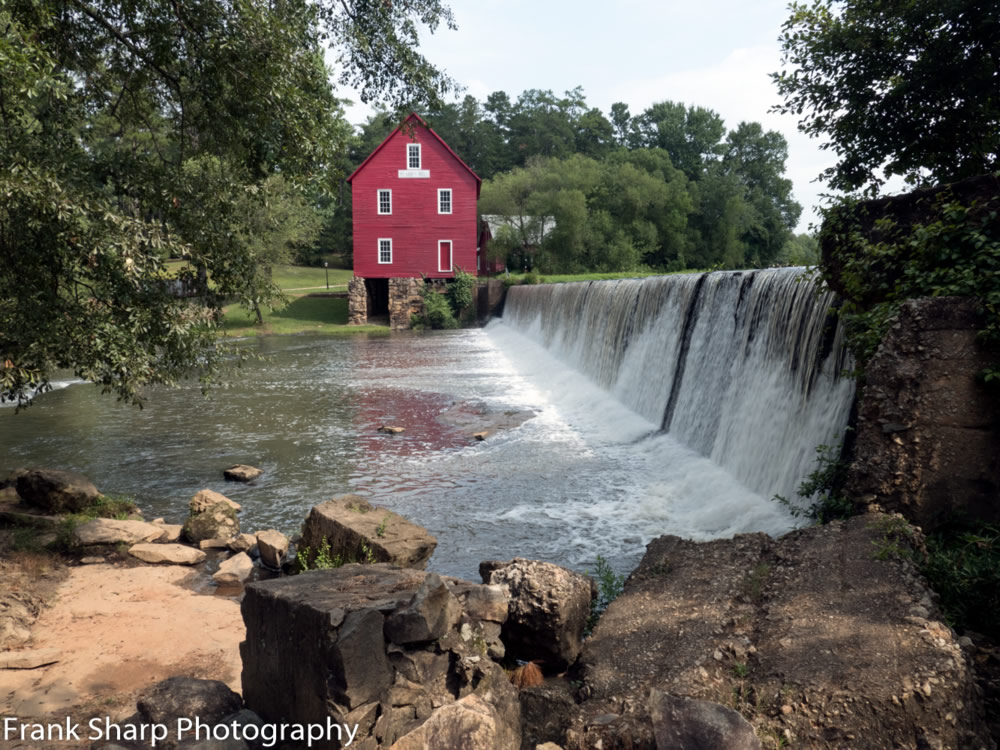 A MILL GOOD TIME. Let’s feature today’s Mystery Photo on top this morning. It may prove a little easier than last issue’s mystery (shown again today at the bottom). Many ought to be able to identify this photograph, as it presents another mill and waterfalls. All you have to tell us is where it is located, and what’s it called. Take your guess by sending to elliott@brack.net and be sure to include your hometown.
A MILL GOOD TIME. Let’s feature today’s Mystery Photo on top this morning. It may prove a little easier than last issue’s mystery (shown again today at the bottom). Many ought to be able to identify this photograph, as it presents another mill and waterfalls. All you have to tell us is where it is located, and what’s it called. Take your guess by sending to elliott@brack.net and be sure to include your hometown.
IN THIS EDITION
TODAY’S FOCUS: Local Group Seeks To Stimulate 50,000 Conversations on Transportation
EEB PERSPECTIVE: On Visiting the National Civil Rights Museum in Downtown Atlanta
FEEDBACK: On Violence, Civil Rights and When National Park System Started
UPCOMING: Scientific Study on Water Reuse in Gwinnett Gains Major Grant
NOTABLE: Lawrenceville’s Johnson Is Top Police Chief in Georgia
RECOMMENDED READ: What Pet Should I Get? By Dr. Seuss
GEORGIA TIDBIT: Bernstein Praises Wallingford Riegger for “Musical Modernism”
TODAY’S QUOTE: What One Guy Observes Is on the Other End of the Fishing Pole
MYSTERY PHOTO: Beautiful Waterfalls in Idaho Stumped Our Mystery Experts
LAGNIAPPE: Gwinnettians Enjoy Nights Out with Good Music, and Food
TODAY’S FOCUS
Group seeks to have 50,000 conversations about transportation
By Joel Wascher
LAWRENCEVILLE, Ga., Aug. 7, 2015 — The week of August 24-28, leaders as well as hundreds of other volunteers in Gwinnett will be focusing on what role transportation plays in shaping Gwinnett’s future, and what they want that future to look like. The program, called the “Gr8 Exchange on Transportation,” was kicked off on August 3 with nearly 100 community leaders starting the conversation on this subject.
 Chuck Warbington, executive director for the Gwinnett Village Community Improvement District, says: “This isn’t an effort to prescribe what type of transportation people need to be talking about; it’s a more organic approach to the public input process. We hope to reach portions of the community that have not always been represented at the table.”
Chuck Warbington, executive director for the Gwinnett Village Community Improvement District, says: “This isn’t an effort to prescribe what type of transportation people need to be talking about; it’s a more organic approach to the public input process. We hope to reach portions of the community that have not always been represented at the table.”
Diverse groups from all around Gwinnett will be mobilizing to take part in the Exchange. The goal is to have 50,000 conversations the week of August 24th.
The leadership team is currently in the process of recruiting volunteers to help take the message into the many communities of Gwinnett. They will be passing out materials at local restaurants, cafes or sporting events. Volunteers will have the opportunity to host local conversations which can be anything from a happy hour or dinner to a neighborhood meeting. They will also be asked to pledge to have more personal, one-on-one focused conversations on this subject. Every person who participates in a conversation will be asked to take a text survey with eight simple questions that get to the heart of what they want Gwinnett to be 20, 30 or 40 years from now.
Joe Allen, executive director of the Gwinnett Place CID, says: “We can’t reach everyone on our own. For this effort to be a success, we need people from all over Gwinnett to take ownership of this program and use the tools we’ve created to reach their own networks.”
Here are a three other ways people who live and/or work in Gwinnett can help support this county-wide, week-long conversation:
- Spread the word! Share information with your friends, colleagues and peers in Gwinnett. Just click here to share on Facebook, Twitter and more.
- Host a conversation! The Gr8 Exchange is looking to have 500 hosted conversations on transportation the week of August 24th. Check out the planned conversations here and post your own here.
- Volunteer! The Exchange will need help spreading the word all across Gwinnett. They’re looking for volunteers to help initiate conversations by passing out post-cards, flyers, texting cards and more. Sign-up here.
- For more information, visit www.thegr8exchange.com/rally
National Civil Rights Museum is a solid attraction for Atlanta
By Elliott Brack, editor and publisher
AUG. 7, 2015 | If you haven’t been, you need to visit the National Civil Rights Museum in downtown Atlanta. The setting is superb: the parking garage serves three museums, with a central green vista from the garage to the Civil Rights and Coca Cola Museums and to the Georgia Aquarium. Parking is a flat $10. From Gwinnett, take the Williams Street exit off I-75/85, turn right onto Ivan Allen Boulevard, and the museums are a block away on your left.
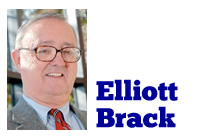 The Civil Rights Museum has been open for about a year—–and is attracting acclaim for the way the story is presented. It seeks to put the Civil Rights struggle in connection to today’s global Human Rights issues.
The Civil Rights Museum has been open for about a year—–and is attracting acclaim for the way the story is presented. It seeks to put the Civil Rights struggle in connection to today’s global Human Rights issues.
It’s a great place for parents and grandparents to take the children. We took our two granddaughters the other day, and were pleased at their reaction and understanding through the many exhibits and film, and their use of interactive media to absorb the story.
Among the highlights of the museum are items from The Morehouse College Martin Luther King Jr. Collection. Visitors can view many of the personal papers and items from the collection, some presented on a rotating basis. On display through the end of August is “Man Behind the Movement,” detailing the inner workings of the movement, drawing on materials showing Dr. King to be an avid reader and music fan, and a person who still worked when even on vacation.
Another element of the current exhibit is “Rolls Down Like Water,” highlighting how the Civil Rights movement began in the 1950s and 1960s, showing sometimes difficult-to-view brutality as black Americans experienced injustices as they sought to achieve their own personal rights. You see dramatic film of the Freedom Riders working their way through the South, often targets of violence; of the March on Washington; and hear the inspiring words in the beautiful cadence of that day from Dr. King. It is a stirring experience to hear those words again.
The current final exhibit is the Spark of Conviction, emphasizing today’s more global efforts of Human Rights. In one exhibit, it features tyrants of human rights, from Hitler to Mao, to Idi Amin, Joseph Stalin and others. Another exhibit shows present-day dictators in power around the world, listing their assault on the rights of individuals. It also focuses on champions of world human rights, giving you an uplift as you exit this exhibit.
All this is presented against the backdrop of an understanding of the Universal Declaration of Human Rights. This contains a set of principles for governments to use to be accountable to protect the rights and freedoms of their people.
Tickets to the Civil Rights Museum cost $15 for adults, $10 for children 7-12, with those 6 and under free. Seniors, other students and educators get in for $13. There are deeply discounted tickets for active military family members, and the entry is free for active duty military.
While reading the many boards and seeing the movies can be time consuming, there are benches and seats to rest. We suggest many people would want at least three hours to adequately feel you got your money’s worth. The Civil Rights Museum is a major addition to the Atlanta historical and cultural attractions.
IN THE SPOTLIGHTCrowell Brothers Funeral Home
 The public spiritedness of our sponsors allows us to bring GwinnettForum.com to you at no cost to readers. Crowell Brothers Funeral Home now has a new location in Buford at 201 Morningside Drive in Buford, in addition to our original location on Peachtree Industrial Boulevard in Norcross, Ga. For over 30 years, it has been a family owned and operated business in business, and which prides itself on caring, individualized service. The staff at Crowell Brothers works to help families properly honor their loved one, according to his or her own personality and life experiences. Many families follow their own traditions when arranging services; others seek something different, a way to celebrate an extraordinary life. Crowell Brothers strives to personalize each service and help those affected begin their healing process. Whether you are currently in need of our services, or are simply educating yourself about your choices, this site was established with you in mind. Crowell Brothers is here to help you through any questions or concerns that you may have.
The public spiritedness of our sponsors allows us to bring GwinnettForum.com to you at no cost to readers. Crowell Brothers Funeral Home now has a new location in Buford at 201 Morningside Drive in Buford, in addition to our original location on Peachtree Industrial Boulevard in Norcross, Ga. For over 30 years, it has been a family owned and operated business in business, and which prides itself on caring, individualized service. The staff at Crowell Brothers works to help families properly honor their loved one, according to his or her own personality and life experiences. Many families follow their own traditions when arranging services; others seek something different, a way to celebrate an extraordinary life. Crowell Brothers strives to personalize each service and help those affected begin their healing process. Whether you are currently in need of our services, or are simply educating yourself about your choices, this site was established with you in mind. Crowell Brothers is here to help you through any questions or concerns that you may have.
- For more information, visit our web site at http://www.crowellbrothers.com/ or call us at 770-448-5757.
- For a list of other sponsors of this forum, go to: https://www.gwinnettforum.com/about/sponsors.htm.
Some on either side resort to violence to get their views across
Editor, the Forum:
 Seriously, I don’t understand why the folks who are very liberal Democratic voters think and act as they do. If they disagree with something, they want it outlawed, and if they support something they want everyone to agree with them.
Seriously, I don’t understand why the folks who are very liberal Democratic voters think and act as they do. If they disagree with something, they want it outlawed, and if they support something they want everyone to agree with them.
Worst of all, they seem to resort to violence to express themselves. Look at groups like Occupied Movement. Many of the crazy leaders like Jesse Jackson and Al Sharpton are staunch liberal Democratic members. Why? You took a shot at me on my distrust and dislike of liberals but I can’t figure out one single positive point to say about this crowd.
— Steve Rausch, Norcross
Dear Steve: The interesting aspect of your comment today is that it can probably be turned 180 degrees by people who disagree with you, with them seriously wondering why conservatives think the way they do. Let’s face it: people think in different ways. The big effort is to get along as friends, as you and I do. And granted, some on both sides seem to resort to violence, (i.e. Charleston, etc.) entirely missing Dr. King’s teaching that non-violence is empowering. –eeb
National Park system dates from Lincoln in System Dates from Lincoln in 1864
Editor, the Forum:
Contrary to what a reader writes (that Theodore Roosevelt created the National Parks system,) the National Parks Act, creating the National Parks, was passed in 1916, under the administration of Woodrow Wilson, a Democrat.
— Robert Hanson, Loganville
Dear Bob: Somewhat right. The National Park System dates from 1864, signed by Abraham Lincoln. Theodore Roosevelt doubled the number of sites within the National Park System. As president, Roosevelt signed legislation establishing five new national parks: Crater Lake, Ore.; Wind Cave, S.D.; Sully’s Hill, N.D., (later re-designated a game preserve); Mesa Verde, Colo.; and Platt, Okla. (now part of Chickasaw National Recreation Area). Yes, the actual act came in 1916 from Wilson.–eeb
More discussion on the passage of the Civil Rights Act
Editor, the Forum:
Did I really read above that liberals brought us the Civil Rights Act? Wow! That quite a stretch! The link below tells the story about the Civil Rights Act’s passage: http://capitalgainsandgames.com/blog/bruce-bartlett/1300/who-opposed-civil-rights-act-1964
I’ll just list some key points. If you want to read the entire article, click on the link.
* It’s worth remembering that the longest filibuster of the 1964 act was conducted by Senator Robert C. Byrd, Democrat of West Virginia, who personally spoke against the legislation for 14 hours and 13 minutes on June 9 and 10, 1964, amounting to 86 pages of fine print in the Congressional Record.
One final element was essential to passage of the civil rights bill—the strong support of Republicans.
- Of the “nay” votes, three-fourths were Democrats. In short, the bill could not have passed without Republican support. As Time magazine observed, “In one of the most lopsidedly Democratic Houses since the days of FDR, Republicans were vital to the passage of a bill for which the Democratic administration means to take full political credit this year.”
- A similar story was told in the Senate. Of those voting “nay,” 80 percent were Democrats, including Robert C. Byrd and Sen. Al Gore’s father, then representing Tennessee.
- Republican leader, Senator Everett McKinley Dirksen of Illinois had done yeoman work in responding to the objections of individual Republicans and holding almost all of them together in support of the bill. “More than any other single individual,” the New York Times acknowledged, “he was responsible for getting the civil rights bill through the Senate.”
— Alex Ortolado, Duluth
- SEND FEEDBACK AND LETTERS: elliott@brack.net
Gwinnett program to test using ozone process on reuse water
Gwinnett’s nationally recognized expertise and leadership in water and wastewater treatment has attracted research funding from the WateReuse Research Foundation. Gwinnett Commissioners have approved an agreement with the foundation for a research project to test the feasibility and economics of using ozone/biological treatment process to produce drinking water directly from reclaimed water, compared to a more expensive reverse-osmosis process that is currently used in Texas and California. Gwinnett’s drinking water will not be impacted by the research.
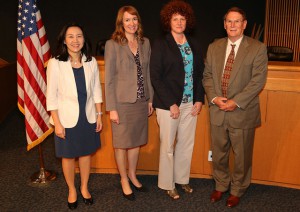
Members of the project leadership team are, from left, Researchers Dr. Ching-Hua Huang; Denise Funk; Dr. Kati Bell; and Ron Seibenhener.
Gwinnett County is the only American utility to use both ozone and biological filtration at a water reclamation facility. When Gwinnett returns highly treated wastewater back to Lake Lanier, it is nearly drinking water quality, and in many ways is cleaner than the lake water.
Denise Funk of the Gwinnett County Department of Water Resources says: “This project will allow water utilities to evaluate water-supply options to decrease their dependence on lake or river withdrawals. High-quality reclaimed water is not subject to changes in rainfall, eutrophication, chemical spills, or algae blooms,” she explained.
In addition to Funk, who is co-principal investigator for the project, team leaders for the small-scale, 22-month research project include Dr. Kati Bell, a national leader in water reuse and disinfection from CDM Smith in Boston; Dr. Ching-Hua Huang, a Georgia Tech professor who specializes in disinfection byproducts and advanced oxidation; and Dr. Ben Stanford of Hazen and Sawyer, who will work on identifying and controlling human health hazards. Staff from Eurofins Eaton Analytical, Inc., the largest potable water-testing lab in the U.S., and faculty from Tennessee Tech will also participate. Several of the internationally acclaimed experts who will play a key part in the study attended Tuesday’s commission meeting.
Gwinnett County Water Resources Director Ron Seibenhener says: “Globally, the problem of water scarcity is growing as more people put increasing demands on limited supplies of fresh water. Locally, this project will allow water utilities to evaluate other water supply options.”
The research project will be supported with $100,000 from the foundation and more than $900,000 in planned expenditures by the County that will include the purchase of pilot plant equipment and professional services for engineering and testing.
Georgia Piedmont Land Trust becomes fully accredited
The Georgia Piedmont Land Trust (GPLT) has achieved land trust accreditation from the Land Trust Accreditation Commission, an independent program of the Land Trust Alliance.
 Rebecca Spitler, Board President of GPLT, in announcing the new designation, says: “Becoming accredited was a key component in our strategic plan. Achieving accreditation is an important milestone on our path to organizational sustainability.” Founded in Gwinnett County in 1998, the organization now protects lands with conservation values throughout the northern portion of Georgia, including the Piedmont and Blue Ridge and Ridge and Valley ecoregions.
Rebecca Spitler, Board President of GPLT, in announcing the new designation, says: “Becoming accredited was a key component in our strategic plan. Achieving accreditation is an important milestone on our path to organizational sustainability.” Founded in Gwinnett County in 1998, the organization now protects lands with conservation values throughout the northern portion of Georgia, including the Piedmont and Blue Ridge and Ridge and Valley ecoregions.
GPLT is one of 317 land trusts from across the country that has been awarded accreditation since the fall of 2008. Accredited land trusts are authorized to display a seal indicating to the public that they meet national standards for excellence, uphold the public trust and ensure that conservation efforts are permanent. The seal is a mark of distinction in land conservation.
Commission Executive Director Tammara Van Ryn maintains: “Accreditation provides the public with an assurance that land trusts meet high standards for quality at the time of accreditation, and that the results of their conservation work are permanent.” Each accredited land trust submitted extensive documentation and underwent a rigorous review. Completing this process also required the organizational planning that will make their operations more efficient and strategic.
Carol Hassell, Executive Director of the Georgia Piedmont Land Trust, says: “We recognize that accreditation is a clear means of demonstrating ethical governance and meaningful conservation. The land trust community as a whole is stronger for it.”
NOTABLELawrenceville Police’s Johnson is top chief in Georgia
Chief Randy Johnson of the Lawrenceville Police Department has been honored by the Georgia Association of Chiefs of Police (GACP) as this year’s Outstanding Chief of the Year. This award was bestowed on last week during the GACP’s training conference in Savannah.
Lawrenceville Mayor Judy Jordan Johnson (no relation) says: “Chief Johnson is most deserving of this distinguished honor because he is dedicated to excellence within the Lawrenceville Police Department. Under his leadership, Lawrenceville experiences a much stronger, safer, and thriving local community.”
With over 30 years of experience in the Department, Johnson has served the last 19 years as the Chief of Police. Earlier this year, he was also recognized a VALOR Public Service Awards Program from the Gwinnett Chamber. Johnson continues to serve the citizens of Lawrenceville and is a member of GACP.
Chief Johnson grew up in DeKalb County, graduating from Southwest Gwinnett High. He has lived in Gwinnett for more than 40 years. He and his wife, the former Wanda Iler of Lawrenceville, live on Old Peachtree Road, and also have a 13 acre farm in Barrow County, where they have three horses and at present five German Shepherds. His wife rescues German Shepherd for adoption, though the chief says it often is a foster failure, with them keeping many of the dogs.
The chief’s brother, Bucky Johnson, is mayor of Norcross. For more information about the City of Lawrenceville or the Lawrenceville Police Department, visit www.LawrencevillePD.com,
Speaker emphasizes 5 points in addressing GGC graduates
Almost 150 students were awarded bachelor’s degrees during Georgia Gwinnett College’s summer commencement ceremony, held August 4 at the Gwinnett Center Arena. The event was attended by more than 1,500 people.
 Keynoter Dr. Belle S. Wheelan, president of the Southern Association of Colleges and Schools Commission on Colleges, shared five key points of advice.
Keynoter Dr. Belle S. Wheelan, president of the Southern Association of Colleges and Schools Commission on Colleges, shared five key points of advice.
“First, take time every day to say thank you to the people who help you achieve your goals,” she said. She then reminded the graduates that life is not a popularity contest, that they should dress for the jobs they want and not the ones they have, and they should believe in themselves. “And fifth, learning is a lifelong activity,” she emphasized.
Also addressing the audience was Crystal Thompson, a business major and honors graduate who spoke on behalf of her classmates in sharing her thoughts about the Georgia Gwinnett College experience. Thompson recalled how her college education was hallmarked by “daring greatly” in pursuing experiences outside of her comfort zone, including working on the college’s technology help desk, riding a zip line and studying abroad in Ecuador.
“It is in those moments when I dared greatly that I truly began to live. Life truly begins at the end of your comfort zone,” Thompson said. “Daring greatly has created remarkable moments in my life and has transformed the way I live, learn and lead. Let daring greatly transform your life.”
GGC President Stas Preczewski noted several students who had faced adversity during their college careers. “I never cease to be impressed by the determination and tenacity of students who face challenges that may turn away many people,” Preczewski said. “They persevere, even if they must work full-time, support families or deal with circumstances that would understandably cause one to stop going to college. Such experiences build character and strength that will better equip them for successful lives and careers.”
Georgia Gwinnett College continues its year-long celebration of its 10th anniversary. Fall semester classes begin August 17.
RECOMMENDEDWhat Pet Should I Get?
A book by Dr. Seuss
 How delightful that this manuscript with the illustrations by Ted Geisel (Dr. Seuss) was located by his wife shortly after his death in 1991. This particular story has the same characters as those in One Fish Two Fish Red Fish Blue Fish, which was noted by Cathy Goldsmith, Ted Geisel’s art director at Random House. What Pet Should I Get? is about a classic childhood moment: choosing a pet. It is also about making decisions—-sometimes it’s hard, but you just have to make up your mind. In fact, by ending the story the way he did, Dr. Seuss encourages readers to make up their own minds about how the story ends. What do you think the children got for a pet? Pick this one up and share with a child or revisit your own childhood memories of other wonderful Dr. Seuss titles through experiencing this new treasure!
How delightful that this manuscript with the illustrations by Ted Geisel (Dr. Seuss) was located by his wife shortly after his death in 1991. This particular story has the same characters as those in One Fish Two Fish Red Fish Blue Fish, which was noted by Cathy Goldsmith, Ted Geisel’s art director at Random House. What Pet Should I Get? is about a classic childhood moment: choosing a pet. It is also about making decisions—-sometimes it’s hard, but you just have to make up your mind. In fact, by ending the story the way he did, Dr. Seuss encourages readers to make up their own minds about how the story ends. What do you think the children got for a pet? Pick this one up and share with a child or revisit your own childhood memories of other wonderful Dr. Seuss titles through experiencing this new treasure!
— Karen J. Harris, Stone Mountain
An invitation: what books, restaurants, movies or web sites have you enjoyed recently? Send us your recent selection, along with a short paragraph (100 words) as to why you liked this, plus what you plan to visit or read next. –eeb
GEORGIA ENCYCLOPEDIA TIDBITBernstein praises Wallingford Riegger for “musical modernism”
(Continued from previous edition)
In 1928, Wallingford Riegger left the academic world for the insecurity of living as an independent musical artist. For the remainder of his life, he earned his living as an editor and by arranging other musicians’ works.
By the late 1920s Riegger had become a musical modernist, inspired by Arnold Schoenberg’s atonal school. In his major orchestral works, including Study in Sonority (1927), Dichotomy (1932), String Quartet no. 2 (1948), Symphony no. 3 (1948), and Music for Brass Choir (1949), Riegger composed in a highly advanced, dissonant style that appealed much more to his fellow musicians than to the average concertgoer. Composer Henry Cowell admiringly described one of Riegger’s works as “the choiring of angels.” A critic, however, heard sounds resembling “a dying cow emitting mournful groans.”
In the 1930s Riegger composed music for America’s most innovative dancers, including Martha Graham, Hanya Holm, and Doris Humphrey. His best dance scores, composed for Humphrey, are New Dance and With My Red Fires, and with these works modern dance emerged as a true symphonic ballet. New Dance is generally regarded as the first modern dance work of extended length.
In March 1955 Riegger traveled to his hometown of Albany for the world premiere performance of Dance Rhythms, a genial orchestral work that brought him a standing ovation from a capacity audience. Far less pleasant was his appearance in April 1957 before the notorious House Committee on Un-American Activities in Washington, D.C., which was investigating subversion and communism in the musical world. Riegger refused to answer the committee’s questions, standing on the rights guaranteed him in the First Amendment of the U.S. Constitution. The New York Post columnist Murray Kempton praised Riegger for his display of personal integrity in the face of governmental pressure.
In October 1958 conductor Leonard Bernstein and the New York Philharmonic honored Riegger by performing his Music for Orchestra. Bernstein praised Riegger as a pioneer of musical modernism in America, a creative artist who was “salty, peppery, crusty, unconventional and eternally young in spirit.” In late March 1961 Riegger fell, having tripped on the leash of a dog fighting with another dog in New York. Despite emergency surgery the trauma proved to be fatal, and Riegger died on April 2, 1961.
- To access the Georgia Encyclopedia online, go to http://www.georgiaencyclopedia.org
From last issue — a view from Idaho
 Last issue’s mystery photo didn’t give many clues, and as a result, no one had any idea of where it might be. It was sent in by Beverly Lougher of Lawrenceville, and is a view of Mesa Falls on the Mesa Falls Scenic Byway near Ashton, Idaho.
Last issue’s mystery photo didn’t give many clues, and as a result, no one had any idea of where it might be. It was sent in by Beverly Lougher of Lawrenceville, and is a view of Mesa Falls on the Mesa Falls Scenic Byway near Ashton, Idaho.
Night out
All across Gwinnett, residents are enjoying the many summer concert programs, flocking with their chairs, or blankets, and coolers and picnic baskets, for a night out with music. This is a scene from a recent concert in Norcross’ Thrasher Park, taken by Chuck Paul.
CREDITSGwinnettForum is provided to you at no charge every Tuesday and Friday. If you would like to serve as an underwriter, click here to learn more.
- Send your thoughts, 55-word short stories, pet peeves or comments on any issue to Gwinnett Forum for future publication.
- MORE: Contact Editor and Publisher Elliott Brack at: elliott@gwinnettforum.com


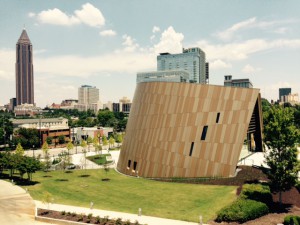
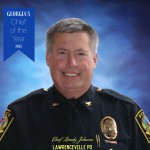
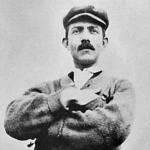









Follow Us